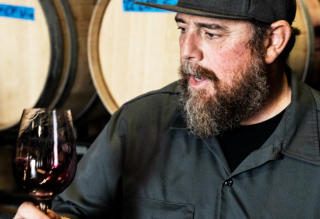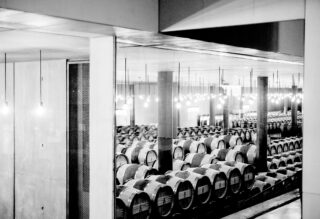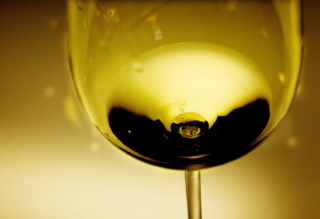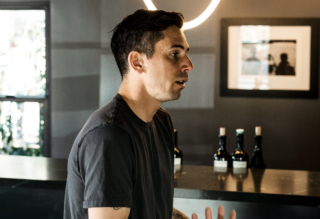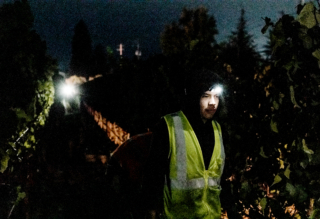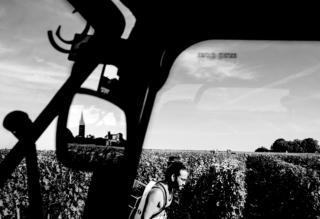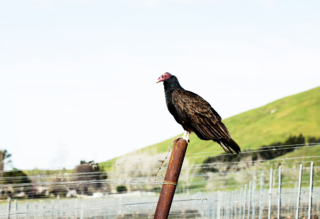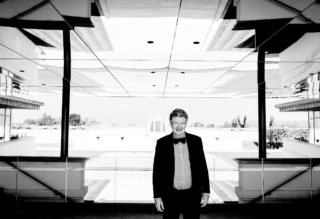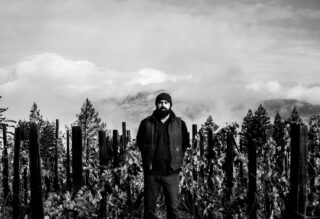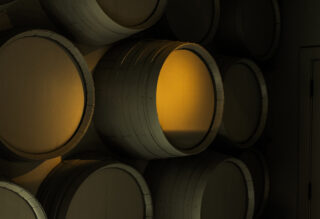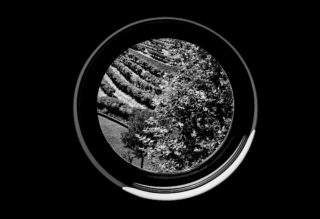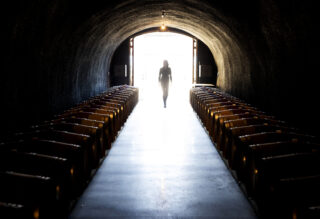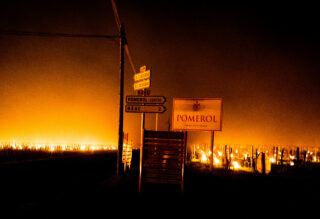Setting the Right Pace
An Afternoon with McPrice Myers
By R.H. Drexel

Hope is not optimism, which expects things to turn out well, but something rooted in the conviction that there is good worth working for.
-Seamus Heany
Dressed from head-to-toe in solid black Dickies and a black baseball cap, vigneron McPrice Myers stands beneath a Ted Lasso-inspired, hand-made sign that hangs above the cellar door in his eponymously named Paso Robles winery: "Believe," hand-drawn in Sharpie ink. AC/DC’s "Highway to Hell" blasts through the speakers as a forklift revs by with a barrel aloft.
Myers waves me through the cellar and outside again, where his vineyard truck is parked out back on the crush pad. He motions for me to hop in. He’s cordial but a bit reserved at first. When Myers gets behind the wheel, I get the sense it’s the first time he’s been off his feet since daybreak. He heaves a deep breath as he puts the truck in gear. "Most of this ranch is east and north-facing, which is what I prefer. It’s part of why I fell in love with this property." We are entering his hillside estate vineyard in the Adelaida district of Paso Robles. "It took longer to rehab this vineyard than I’d anticipated, but that’s okay." Though Myers, 48, is now in his 23rd harvest, he’s relatively new to this estate, which he acquired in 2017.
Discovering the vines had been neglected, he had two additional wells dug at the property, though he’s quick to tell me that they only water the vineyards "as needed. Just enough to have healthier vines and good shoot growth. The freshness and vibrancy we get in the wines now is really nice," he says. "There’s structure here. Density. Power, but there’s all the freshness in the background that keeps it honest."
I first met Myers back in 2002 when he was in his twenties, a young buck just starting out at the then collegiate and popular Central Coast Wine Services in the Santa Maria Valley of Santa Barbara County, making wines with his buddy, Russell P. From, under the Barrel 27 label. I’d often swing by to visit friends making wine there, but I never conversed much with Myers. He was quiet and kept mostly to himself.
"Back then, the CCWS was an incubator of talent. You had Paul Lato (Paul Lato Wines), Lane Tanner (Lane Tanner Wines), Curt Schaclin (Sans Liege), Gary Burke (Costa de Oro), the late Seth Kunin (Kunin Wines), Joe Davis (Arcadian), Frank Ostini and Gray Hartley (Hartley-Ostini Hitching Post Wines), all there making wine. It was the perfect situation," he says. "That was going to school. I’m so grateful for my time there."
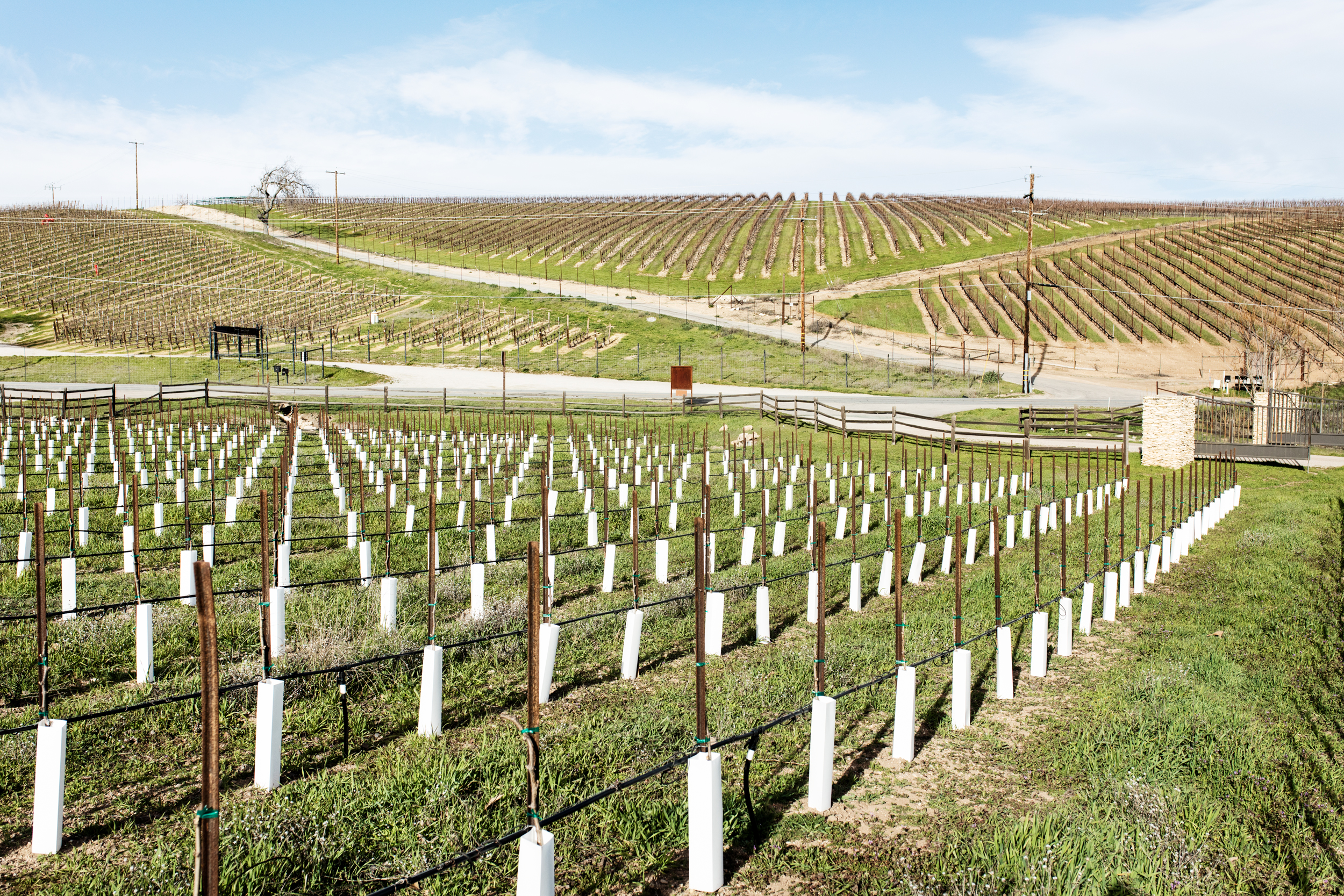
We drive through slippery vineyard roads, past a dense forest that surrounds the estate, and emerge atop a hill where he’s eager to show me their new VIP tasting digs, shipping containers painted in earth tones to better blend into the natural setting. The view is spectacular from the top of the estate. Myers deftly points out the territory below, a vast country expanse that includes "San Miguel. Ranchita Canyon. Hog Canyon," he says, listing sites and sub-appellations enthusiastically. "Estrella. There’s J. Lohr winery, the Power Road corridor. Hwy. 46 east. Geneseo. Past that, it’s the Shandon District. Over here, you’ve got El Pomar. That’s Black Mountain. And, on this side is Creston. And there’s Templeton Gap. You can see all the way to the Eastern Pinnacles in Monterey County."
"The first time I came up here, I was like, Holy Shit!"
He’s animated as he describes the landscape below and beyond. "The first time I came up here, I was like, Holy Shit! You don’t realize the view until you come here. It’s amazing. It’s steep terroir," he continues, "with not much topsoil, so yields are low. The vines are responding well to just simple things. Enough water. Compost. Little things to give them a little extra, and they’re grateful."
As we wind our way back down towards the winery, he points to a mountainside where he hopes to dig caves. "That will probably begin in 2027. It will be 5,000 feet of barrel storage." He plans to expand his production area, as well. "We’ll have more vessels that will be more conducive to what we want to do. I love small open-top fermenters, just because that’s where I started, and I do appreciate them, but having more concrete, even for aging, and more stainless steel; that will be a game changer production-wise. Our growth is measured and thoughtful. We want to make sure that what we do we do well and right."
When we reach the winery, Myers walks ahead purposefully, waving me in and pointing to a table and benches. It’s a busy day in the cellar, with a bottling date just around the corner. He talks to his staff for a bit, then grabs a few bottles from storage for us to taste.
"Stress is a good motivator."
Myers has about 20 employees. "We’re all rowing in the same direction, and it’s a good feeling, but there’s a tremendous amount of stress. Stress is a good motivator. You’re always really paying attention to the details because there’s so much riding on the decisions we make. I still pinch myself that I get to do this for a living. I didn’t grow up in the wine business. I wasn’t the son that was going to take over. Back when I started, I thought, ‘If I could just make an honest living, pay my bills and be able to do this.’ That was all I was hoping for. Sometimes it’s hard to believe. I pinch myself. Am I really doing this?" We are joined at our tasting by his Associate Winemaker, Adrian Perez, a former McPrice Myers wine club member and organic farmer whose family maintains an organic farming business on the Central Coast. When he was hired, he had no previous winemaking experience. There’s a jovial yet respectful vibe between them.
Myers was born in Bellflower, California, to Irish parents. His family roots are in County Cork, Galway, and Waterford. Myers pays tribute to his roots with the Claddagh symbol, which was present throughout his house growing up. It now appears on his wine labels and is painted on the side of his winery. Though his mother wore a broach of the Claddagh symbol, he didn’t start paying attention to the symbol until he became a winemaker. "I like what it stands for. Love, loyalty, and friendship. You have to love what you do. You have to be loyal to the process and craft. And grateful for the amazing friendships wine creates; whether I’m there or not, a bottle of wine is the best thing when sitting around and having a chat with friends. It just is."
He was raised in the suburban town of Whittier in Southern California, where his father worked for the youth authority (a now-defunct organization). "All the government workers had their kids at Kaiser Hospital. Me, my brother and all my friends were born at the same hospital. We were a bunch of wild kids running the streets. It was the city version of "Lord of the Flies", but maybe not that violent. Skateboarding, BMXing, playing sports. I enjoyed my childhood. My parents’ generation was the generation where we were kind of let go of. We were wild children. Go outside when the sun rises and come home when the sun sets. You were gone all day, and there was no contact. Now, if I don’t hear from my son by the time he gets out of school at 3:05, I start to panic."
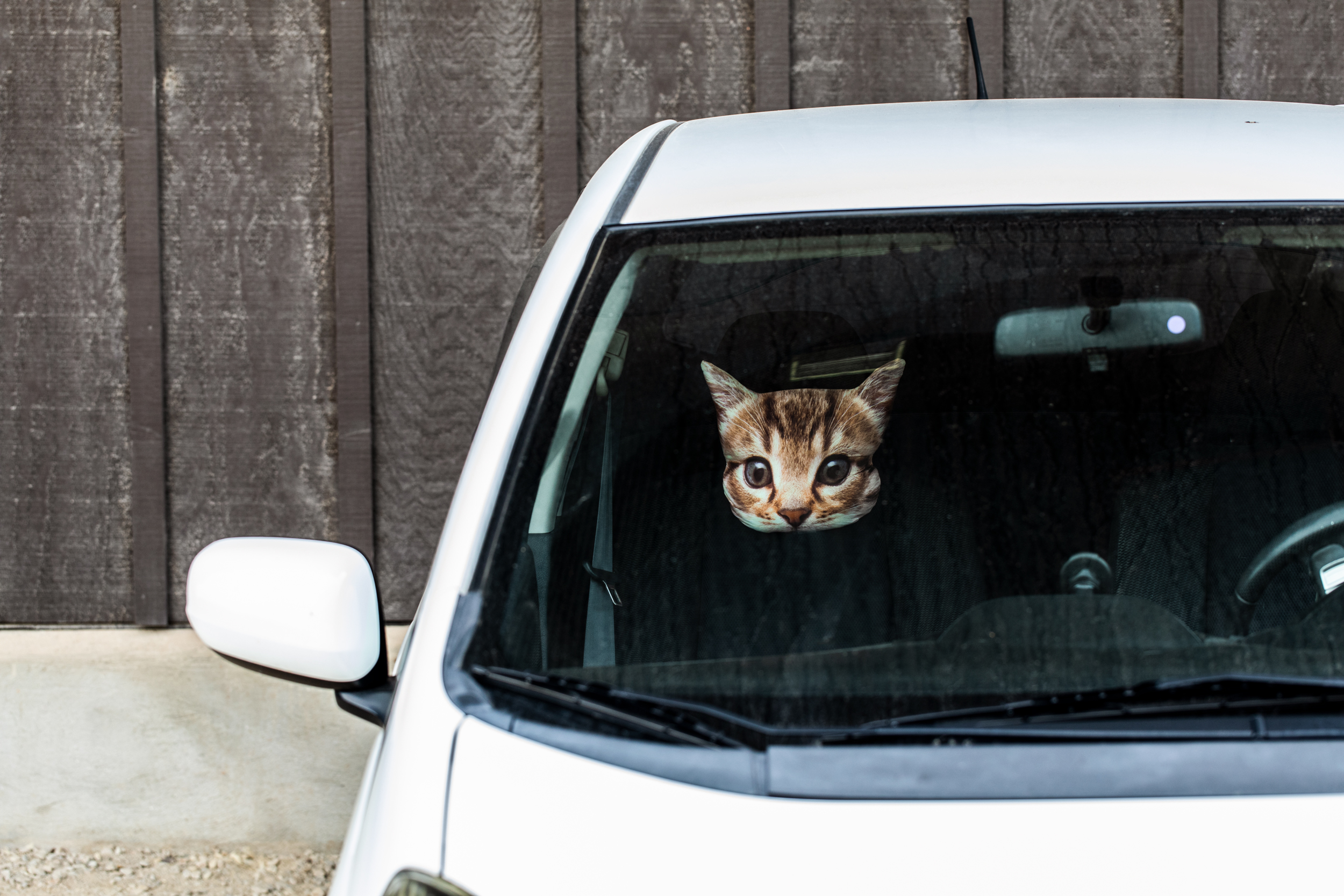
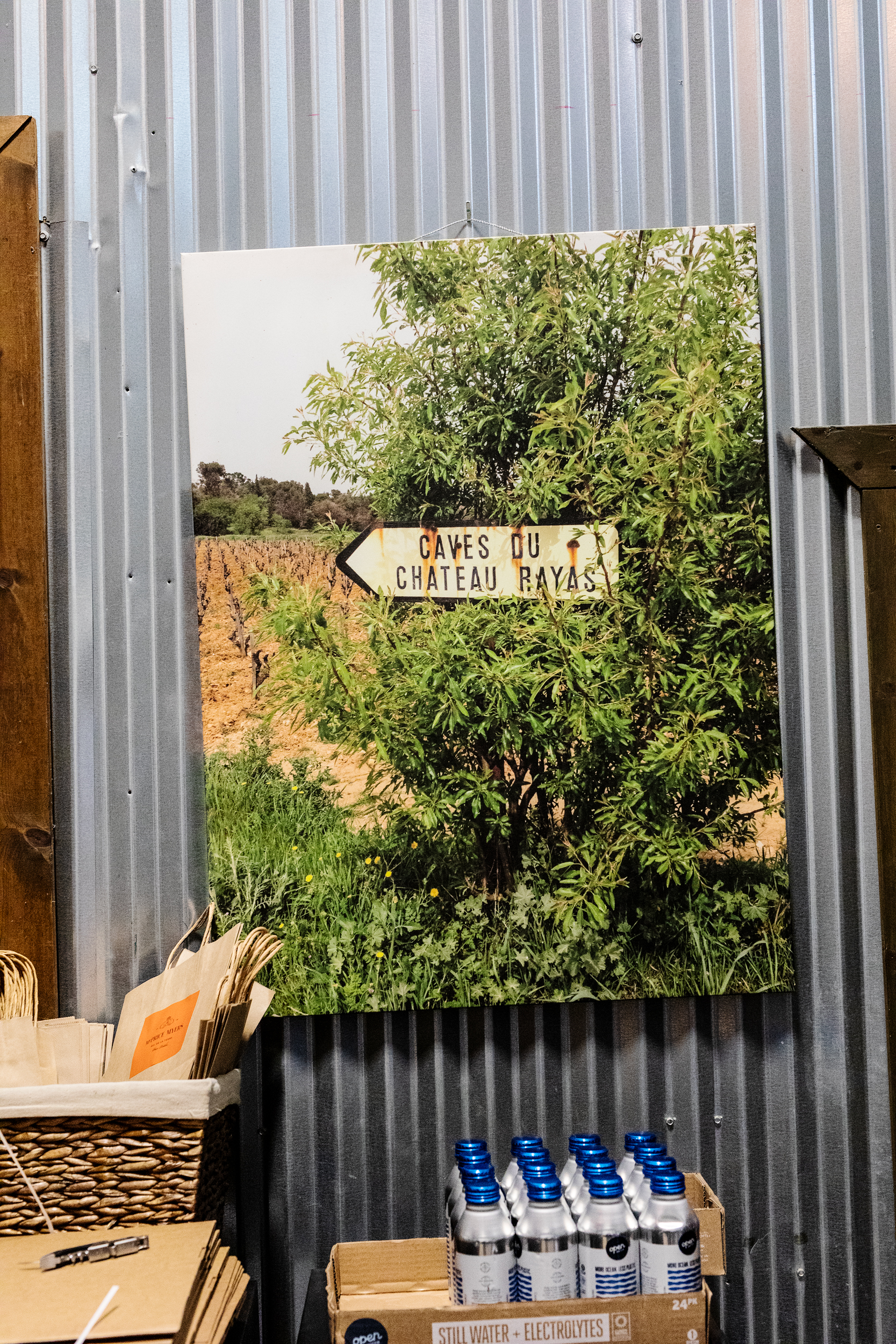
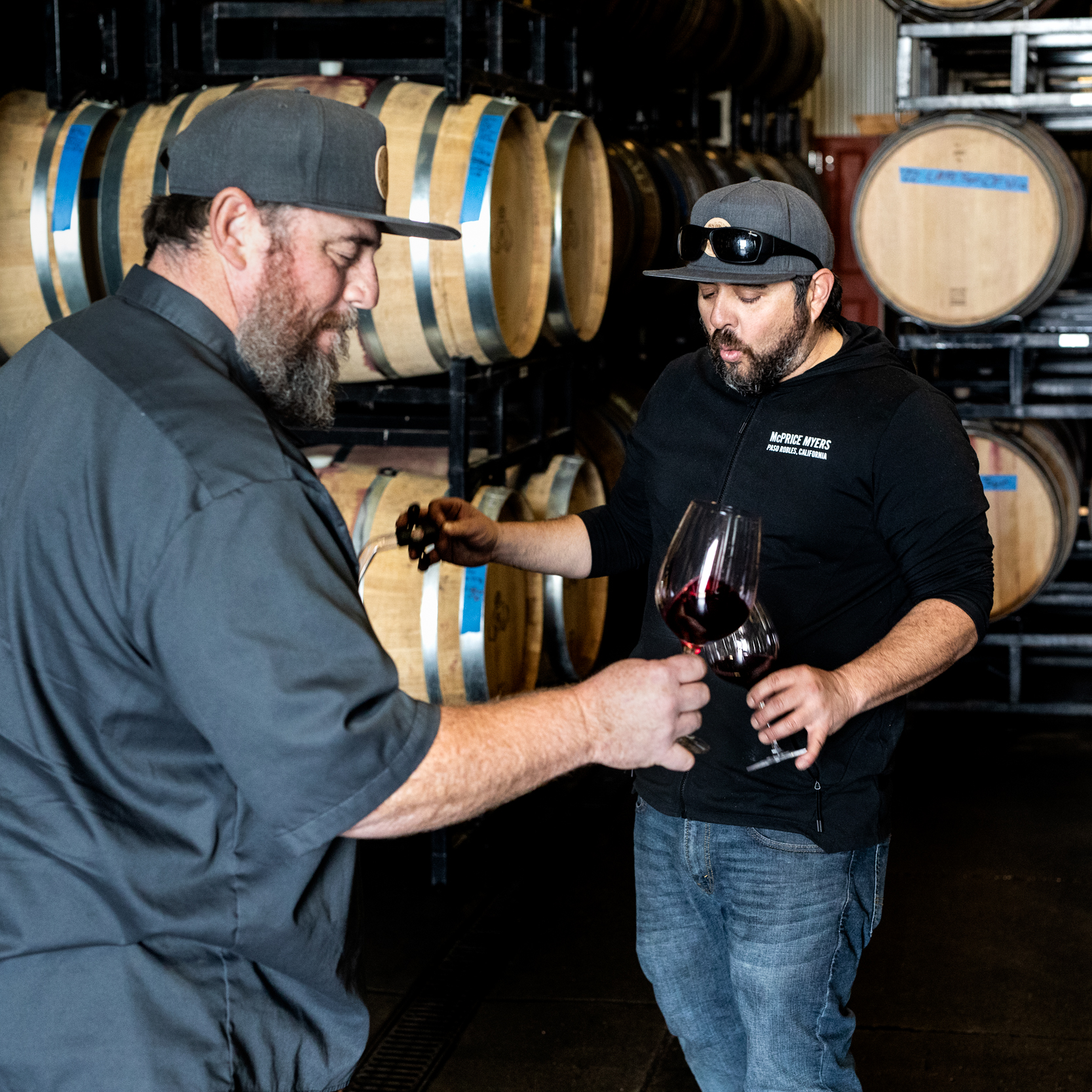

When he was growing up his parents didn’t drink wine, but he says of his vocation, "I had this need to do this. I don’t know where that came from, but I was completely intrigued by wine." At the age of 19, while working at Trader Joe’s, he began learning about wines. "This was when they were a small company and had an incredible selection. My boss thought I had a passion for it." By the time he was 21 years old, he was visiting wine shops all over Southern California, from The Wine House to Hi-Times. "I would leave a wine shop with a case of wine and maybe a wine book to read. I was just saving money like crazy so that if I had the opportunity to make wine, I could do it."
When he was 24, he and his now-wife began dating, exploring Paso Robles and Santa Barbara Wine Country. "She was very supportive. It’s such an unobtainable thing from the outside. Who can just go and make wine? I just didn’t know how to go about it."
Then, fortuitously, an acquaintance showed him a contract for custom-crushing at Central Coast Wine Services, and after learning that he didn’t need credentials or to be vetted to lease space there, he bought a few used barrels and purchased a little bit of fruit. By the time he was 25, he was making wine full-time.
The first red wine he ever made was the 2002 Larner Vineyard Syrah, from Santa Barbara County’s Ballard Canyon appellation. He still makes that wine today. "I was super intrigued at that time with single-vineyard Syrahs from the Northern Rhone. I was entrenched in that world. Syrah sang to me. I remember the first time I had the Jean Louis Chave, St. Joseph, Offerus. I was like, ‘How can a wine taste like this? Lavender. Violets. Cured olives. Then I started to get into 100% Grenaches. From the Colombis by Famille Isabel to Janesse "Chaupin," to Bosquet des Papes, Gloire de Mon Grand-Pere—I love those. They’re so inspiring." Once Myers became enchanted with the Northern Rhone, he also discovered Condrieu.
"I had a Condrieu, and I thought ‘Oh fuck! Viognier is an insanely unique, singular grape. It’s captivating. You can’t get your nose out of the glass."
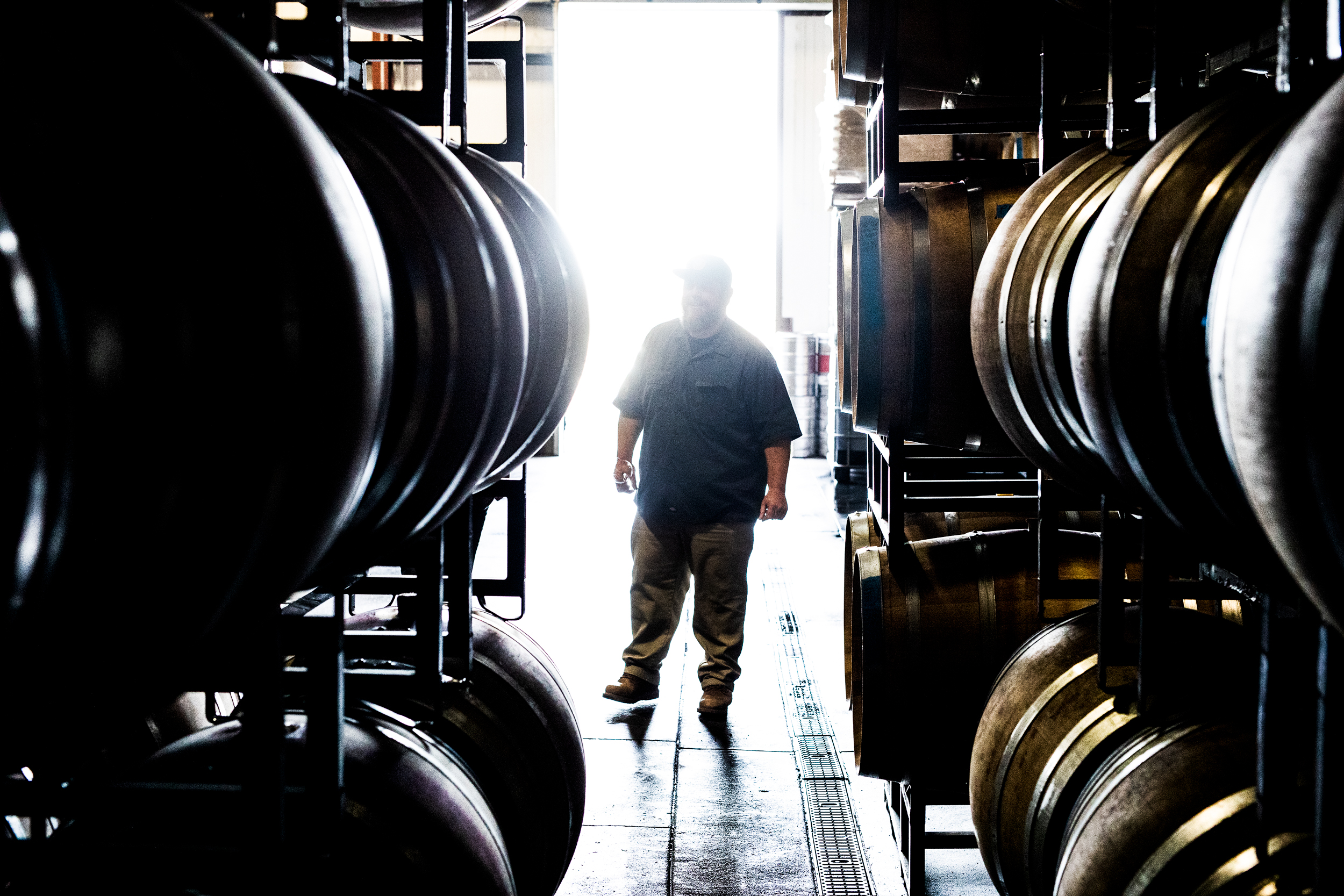
Myers has never taken classes for winemaking and admits that he is sometimes plagued by imposter syndrome. "I’ve heard this so many times from people who haven’t gone to traditional school for this or didn’t grow up in a wine family; they sometimes get imposter syndrome. Just like with some actors and comedians…they don’t feel like they’re part of the club. It’s a common thing to think about: ‘If I’m not book-trained or classically trained, I don’t have a certain knowledge they have.’ What I do is purely intuitive. I’ve educated myself, but ultimately, it’s more of a feeling. People ask me all the time if I use more science now than I did at the beginning. No. It’s the same. It’s taste and feel. That’s something you can’t learn. You can go to school until the cows come home, but if you don’t have a great palate, and if there’s not an intuitive element to it, it’s really an uphill battle. Either you have it, or you don’t. When I smell, taste, feel something, and when I watch it grow, it’s very natural to me."
When I tell Myers he’s articulate and that I enjoy his engaged manner of speaking, he says, "I’m barely high school educated, and I quit college at a very young age, so that’s not one of my strong suits, in my opinion."
"Once you become rigid, it’s so hard to begin to think about solutions."
As we taste through his vineyard-designated wines, his estate wine, and his "Beautiful Earth" brand, an affordably priced lineup of fresh, crunchy, lively wines, he constantly has vintage variation in mind. "Being dogmatic in any way, especially with winemaking, is the death knell. Being nimble, being able to take every block, every variety, for what it is, and trying to do your best in every vintage, that is where it’s at. We know that we have so many issues with climate change. Once you become rigid, it’s so hard to begin to think about solutions. The profession of winemaking, if you follow history, is all about being stewards of wine and doing what you can to make sure that wine stays pristine. From pruning to the bottle, your job is to limit the mistakes. Those are the principles I cherish about winemaking. It’s a lifetime voyage, but still, you want to get better with every vintage. You never want to say, ‘This is what we do. We perfected our process, and that’s it.’ That’s a silly thing to do with a living product and, now, with climate change."
The wines Myers makes range in price from $ 20.00 to $ 100.00. He tells me his pricing philosophy has always been simple. "I never want anyone to have a bottle of my wine and say, ‘Holy Fuck! I paid $50.00 for this?’ I need it to over-perform. I got into wine because I was able to get wines that were well-priced that I was able to learn from, and that got me into drinking wine. Even if a bottle is $100.00, it’s got to over-deliver. And I do think I’m leaving money on the table, but I’d rather have that feeling of over-delivering. I had a $300.00 bottle of white wine---a Rayas white, which is a unicorn---that I still think about today. I got it on the cheap for $300.00. It was a life-changing experience with white wine. It over-delivered for the price."
"In the wine business, success means you’re still here."
I wonder aloud how he measures his success these days. "In the wine business, success means you’re still here," he says, laughing. "It’s important to me that people realize that if you don’t have good people, it’s never going to work. In any successful organization, that’s what it’s all about. And it’s important to be a part of the community. It’s all about the community. It provides a great support system for everyone and lifts up the area. That’s why people are so intrigued by Paso Robles right now. I travel all over the country, and it’s really becoming well-known. And I attribute a lot of that to the people here. They put Paso first."
What do his parents think of his winemaking career? "In the beginning, they were just happy I was putting my energy into something positive. I was getting in a lot of fucking trouble, and they saw my personality change when I got into wine. When I discovered wine, I spent all my free time learning about it, tasting it. My parents felt my passion for it. The furthest thing from their minds was me being a winemaker, but they love it now, and, as parents, they love that I’m doing something I love." His father, Pat, often works the room during wine club events. "He loves to chat people up."
Observing the many opened bottles we’ve tasted on the table, I’m impressed with how unfatigued my palate feels. My tongue isn’t tired and numb but energized and ready for lunch. "We don’t want our wines to be cumbersome," Myers says. "There may be some that lean a little bit more on power, density, and depth, but there’s still an underlying energy that keeps it all lifted."
"People don’t think about the pace of a wine. How does it flow? Some wines are very quick. They zip by too fast. And there are some wines that linger too long. They’re heavy on the front. But, when you hit the pace right, and the height, it brings the wine together."
–
Article by R. H. Drexel
Photography by Svante Örnberg
See more work from Svante at svanteornberg.se by clicking here!
